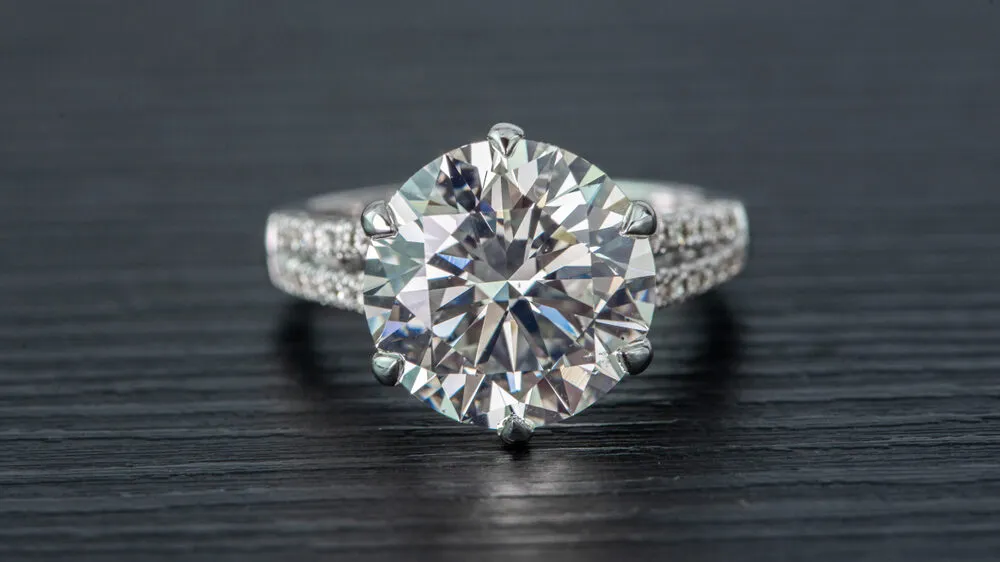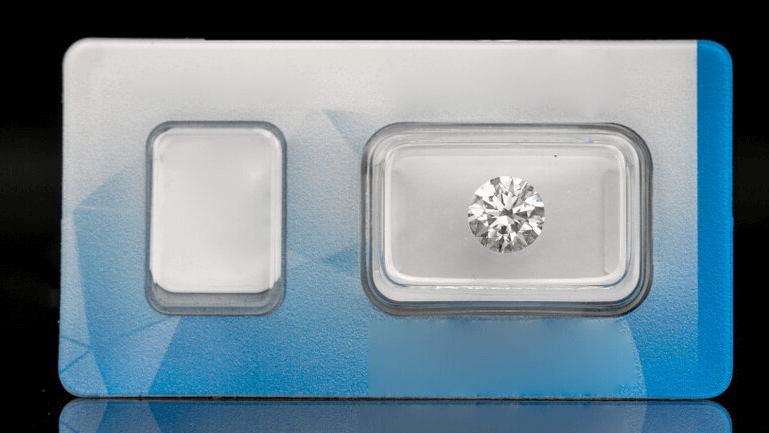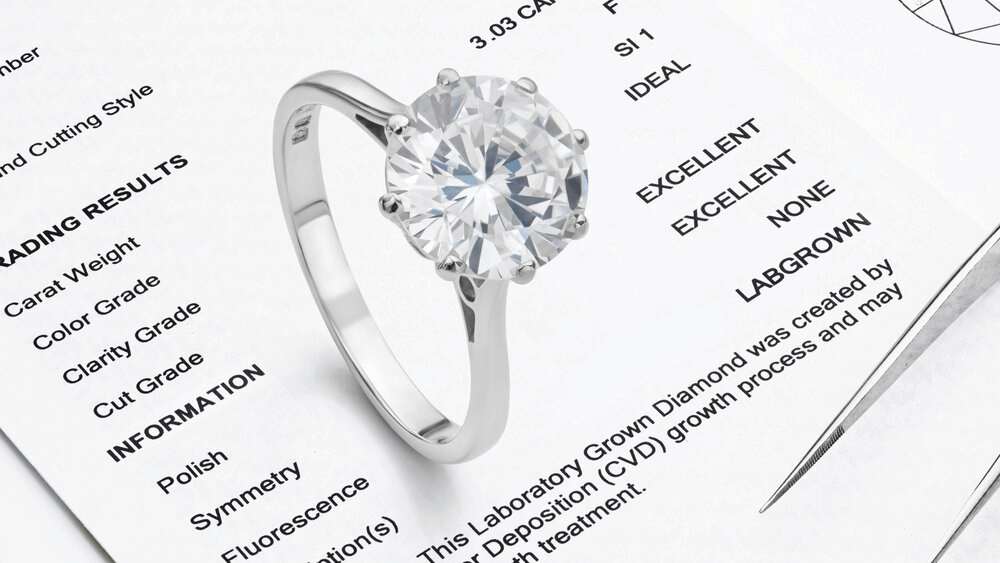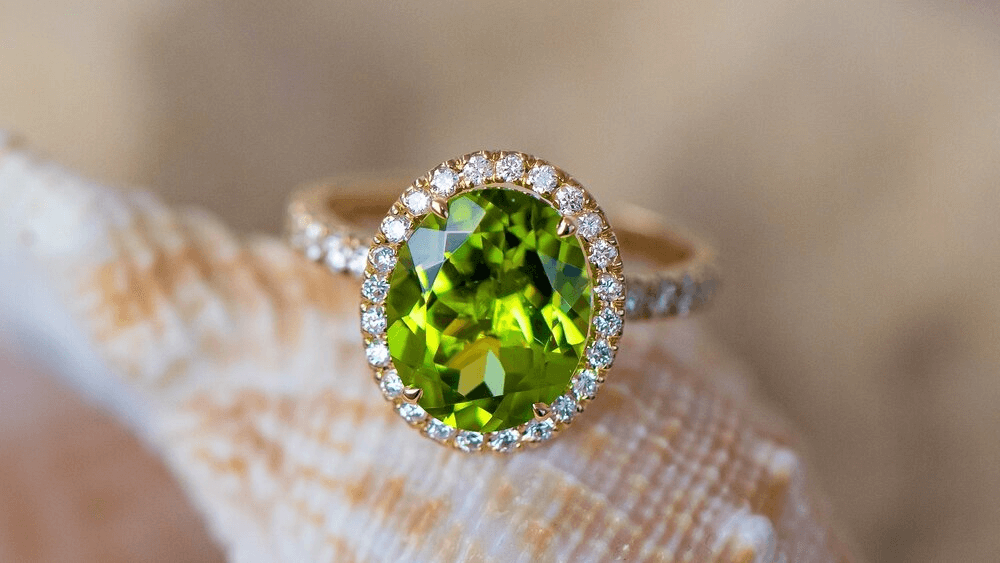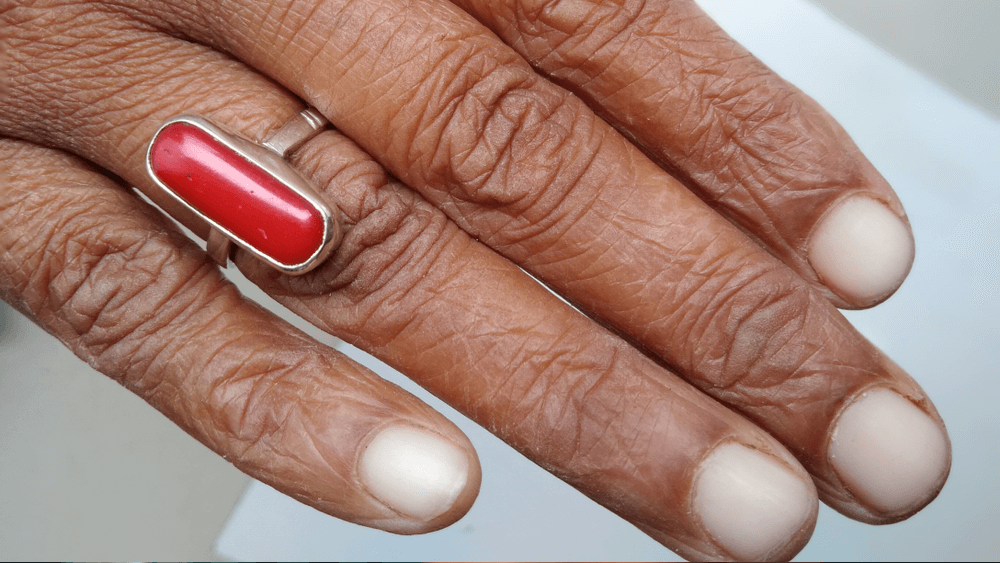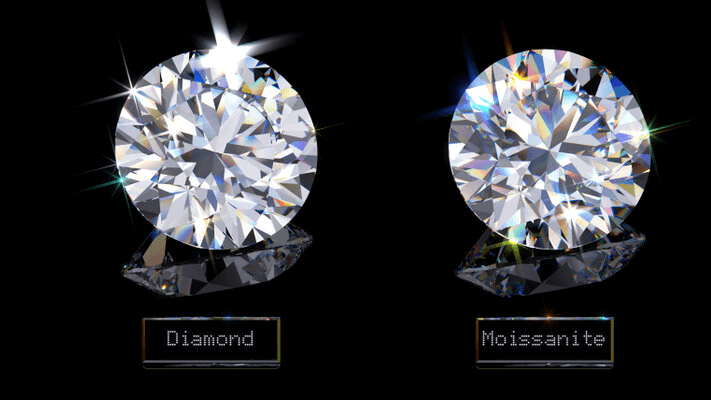Save Big on Stunning Lab-Grown Diamonds

By Gary A.

Edited by Olivia H.
Published Aug 8, 2024
Edited on Mar 31, 2025
When deciding between Lab-Created and Grown Diamonds and natural options, it’s important to understand how both offer beauty and value, but with some key differences.

Navigate This Guide:
- 9 Quick Tips for Choosing Between Lab Grown and Natural Diamonds
- Introduction to Lab Grown Diamonds
- The Price Paradox: Lab-Created vs. Natural Diamonds
- Navigating the Market: Where to Buy
- The Science Behind the Sparkle: How Diamonds Are Grown
- Personal Testimonies: Why Buyers Are Choosing Lab-Grown
- Our Expert Take
- 7 FAQs
Before we dive deeper into the specifics, here are some practical tips to help guide your decision-making process:
9 Quick Tips for Choosing Between Lab Grown and Natural Diamonds
- Tip 1: Understand the Price Variables
Lab-grown diamonds often present a more affordable option compared to their natural counterparts, but prices can vary widely based on several factors. These include the diamond’s size (carat), clarity, color, and cut—collectively known as the 4Cs. It’s crucial to comprehend how each of these aspects influences the price to find the best value for your budget.
- Tip 2: Carat Size vs. Overall Quality
The allure of a larger diamond can be strong, but it’s wise to weigh carat size against the overall quality. A larger lab-grown diamond with poor cut, color, or clarity might not be as visually appealing as a smaller, higher-quality stone. Focus on finding a well-balanced diamond that offers the best combination of all 4Cs within your budget.
- Tip 3: Certification is Key
Ensure your lab-grown diamond comes with a reputable certification from organizations like the International Gemological Institute (IGI) or the Gemological institute of America (GIA). These certificates provide an unbiased assessment of the diamond’s characteristics and confirm its lab-grown origin, offering peace of mind about your investment.
- Tip 4: Compare Prices and Shop Around
Given the evolving nature of the lab-grown diamond market, prices can vary between retailers. Take the time to compare options from multiple sources, keeping the 4Cs constant to gauge the best deals. Online retailers often offer competitive pricing and a wide selection, making them a valuable resource in your search.
- Tip 5: Navigate Volatile Pricing with Strategic Timing
Lab-grown diamond prices can fluctuate due to technological advancements and changes in market demand. To navigate this volatility, consider the timing of your purchase. Stay updated on industry news and technological breakthroughs that could lead to price adjustments. Sometimes, waiting for a certain period or making a purchase during a dip in prices can result in significant savings.
- Tip 6: Understand the Impact of Treatments
Lab-grown diamonds can undergo various treatments to enhance their appearance, such as improving color or clarity. It’s crucial to inquire about any treatments the diamond may have received, as these can affect both the price and the intrinsic value of the stone. Untreated diamonds, or those with minimal enhancements, often command a higher price but maintain a more natural appeal.
- Tip 7: Compare with Natural Diamonds Beyond Price
When comparing lab-grown diamonds to natural ones, extend your evaluation beyond just the price difference. Consider aspects such as long-term value retention, rarity, and the emotional significance attached to natural diamonds. While lab-grown diamonds offer affordability and environmental benefits, natural diamonds carry a unique story and geological history that might hold more appeal for some buyers.
- Tip 8: Be Cautious of Retail Markups
Retail markups on lab-grown diamonds can vary widely among jewelers, particularly in the online space where competition is fierce. It’s important to research and compare prices from various sources, including wholesale options if available. Remember that while the wholesale price of lab-grown diamonds can be substantially lower than that of natural diamonds, retail prices may not always reflect this difference due to markups. Consider working with jewelers who offer transparent pricing to ensure you’re getting a fair deal.
- Tip 9: Prioritize Optimal Grades in Lab-Grown Diamonds
Given that lab-grown diamonds are created in controlled environments, achieving high color and clarity grades (such as D-E for color and IF-VVS for clarity) is more feasible compared to natural diamonds, where such high grades are rarer and significantly more expensive. However, not all lab-grown diamonds are created equal, and quality can vary. To ensure you’re getting a top-tier diamond, insist on purchasing stones that come with certifications from reputable grading entities like IGI or GIA. Specifically, aim for diamonds within the color range of D-F and clarity grades of VS or VVS. This approach ensures that you’re not only getting a high-quality lab-grown diamond but also maximizing the value and appearance of your investment.
Now that you’ve got these practical tips, use Jeweler AI below to find the perfect engagement ring that suits your style and budget:
Introduction to Lab Grown Diamonds
Lab grown diamonds have been on this planet for more than 70 years now, with the first HPHT (High Pressure High Temperature) diamond being created back in 1954. Even so, it wasn’t until recently that lab grown diamonds started to hit the mainstream.
In other words, lab grown diamonds are still a relatively new idea – at least, compared with earth-made diamonds, which are billions of years old and have represented a key part of human history (particularly romantic relationships) for hundreds – if not thousands – of years.
As with anything new, people are still on the fence over how they feel about lab grown diamonds. Are they just as good? Better? Cheap substitutes for the real thing? Are they a good investment or a gimmick? Is it even romantic to invest in a lab grown diamond instead of a real, billions of years-old stone?
In this guide is what you need to know.
Lab-Grown Diamonds Unveiled – The Rise of Eco-Friendly Sparkles
Natural diamonds are found deep underground or in alluvial deposits in remote parts of the world. However they reach the earth’s surface, mining them at scale has some impact on the environment. In recent years, diamond-producing countries have taken significant strides forward when it comes to reducing or mitigating their impact on the environment, and ethical diamonds are now more and more commonplace.
But lab grown diamonds are the eco-friendlier diamonds – at least, in some respects. We don’t need to mine large holes into the earth to retrieve them, but producing them is energy-intensive and requires a lot of heat and pressure to carry out.
Nevertheless, lab grown diamonds do tend to be marketed as the eco-friendlier choice.
The Price Paradox: Lab-Created vs. Natural Diamonds
While it depends on the seller – and the physical characteristics of the diamonds you’re comparing – lab-grown diamonds tend to be anywhere between 30% and 80% cheaper than natural diamonds. For instance, the cost of 5 carat lab-grown diamond provides significant savings compared to a natural diamond of the same size.While a lot of sources state that the difference tends to fall on the higher end of the scale – around 65% – 80% – the growing popularity of lab-grown diamonds as an alternative to natural diamonds has inevitably driven prices higher.
Understanding the Cost Dynamics
A lot of people assume that lab-grown diamonds are naturally flawless, both in terms of clarity and color, but the reality is that lab-grown diamonds are just as unique and flawed as natural diamonds. Some are better than others, with better color or fewer inclusions, but getting a flawless lab grown diamond remains relatively rare.
Lab grown diamonds may not have formed deep underground, where conditions are unimaginably tough, but that doesn’t mean that there isn’t some element of randomness in their occurrence.
Why Lab-Grown Diamonds Are More Affordable
While lab grown diamonds are growing more expensive in many parts of the world, it is highly unlikely they will ever mirror natural diamonds in terms of pricing. The reason for this is simple: lab grown diamonds can be created according to demand, and they can also be created a lot faster. Natural diamonds are a finite resource – this is part of their popularity. Prices will always reflect the fact that we cannot just make more of them.
Lab-Grown Diamonds: The Resale Reality
This is where the disparity between natural and lab-grown diamonds becomes more obvious. While natural diamonds don’t tend to perform very well on the second-hand market compared with their initial sale value, lab-grown diamonds tend to perform worse. Once again, this comes down to availability and the fact that we’re never going to run out of lab grown diamonds.
Nobody knows exactly how lab grown diamonds will perform on the resale market ten, twenty or thirty years from now, since lab grown diamonds are still relatively new. Not all that long ago, most of us wouldn’t have encountered them at all.
Only time will tell exactly what happens for lab grown diamonds in the future – but that doesn’t necessarily mean they’ll be a bad choice for your engagement ring. After all, most of us don’t plan on selling that diamond in a few years’ time.
Navigating the Market: Where to Buy
Whether you’re shopping for a natural or a lab grown diamond, it is never a good idea to buy from a dubious source – or, really, any source that you’re not 100% sure about. Even though lab grown diamonds are much less expensive than natural diamonds, they still cost serious money, and you’re investing a lot of faith into a single stone to represent your love and commitment to your partner.
Shopping online is a great idea, as these retailers are able to offer better deals thanks to lower operational costs. The trouble is that not all online retailers are built the same.
At Will You, we started with a commitment to offering the best resources, education, and guidance to our customers – and that commitment is still going strong today. We don’t sell diamonds that we wouldn’t be happy to invest in ourselves and ensure that any of the limitations inherent to an online store are overcome by excellent standards, insightful shopping guides, and a top-quality selection of diamonds.
Spotting the Best Deals
Diamonds rarely go on offer. You may see a great deal on an engagement ring, but it’s pretty uncommon to stumble upon an almost-too-good-to-be-true deal on a diamond.
That’s not to say you can’t nab great value for money. Understanding the Four Cs and how they can be used to your advantage to track down a beautiful and impressive diamond that doesn’t cost the earth is far better than scouring the web for deals.
This is true whether you’re looking at lab grown diamonds, natural diamonds, or you’re still undecided.
The Science Behind the Sparkle: How Diamonds Are Grown
There are two different leading methods for growing diamonds in the lab. The first is known as CVD, or chemical vapor distillation; the other is known as HPHT, or high-pressure high temperature. Both can condense the process of growing a diamond down from thousands of years (if not more) to a matter of weeks or months, depending on the size of the diamond.
You can take a look at our full guides to CVD and HPHT diamonds to find out more.
Lab Diamonds Under the Microscope
Lab diamonds look and act like natural diamonds, and even feature the same chemical and optical properties as natural diamonds. They are diamonds, plain and simple – or, rather, not so plain.
But there are ways of identifying a lab grown diamond. Experienced gemologists will be able to identify its origin by analyzing microscopic indicators hidden within its crystal structure. These won’t be detectable with the naked eye, whether you’re an expert or a beginner – so, in an engagement ring (or any other diamond jewelry) the differences between lab grown and natural diamonds are invisible.
Certifications to Look For
As always, a report from the GIA is key. This will be able to tell you everything you need to know about the diamond’s quality, country of origin, and whether it’s natural or lab grown.
No matter what type of diamond you’re looking to buy, we would always recommend the GIA as the only truly reliable diamond grading lab.
Ethical Implications in the Diamond Trade
A lot of people assume that lab grown diamonds are the solution to unethical or ‘blood’ diamonds, but the truth is that, in almost every diamond-producing country in the world, massive strides forward have been taken to ensure the diamonds they export come from ethical places. These countries have reworked their supply chains to offer fairer pay and safer conditions to artisanal miners, to provide training opportunities for diamond cutters, and to ensure traceability.
Lab grown diamonds are free from the burden of history, but that’s not to say they’re the more ethical choice. The supply chains are shorter, they’re energy intensive, and they don’t ensure employment for workers in remote areas.
Again, that doesn’t mean they’re the unethical choice either. It’s a question of balance.
Personal Testimonies: Why Buyers Are Choosing Lab-Grown
Here’s what a couple recent lab diamond enthusiasts had to say about their choice:
‘I went with a lab grown diamond after doing research into the differences. At first, I thought I was set on a lab diamond, but the decision was tougher than I expected – despite looking identical (especially to a non-expert) there’s a lot more to it than ‘one is cheaper and more ethical than the other’. I’d happily make my next diamond a natural one.’
‘I figured lab grown was the better choice because of the lower price. It looks great, sparkles a ton, and makes her very happy. Some people ask if it’s real and I can happily tell them ‘yes’ because of the structural similarities’.
‘I hedged my bets. I did a toi et moi ring and incorporated one lab grown, one natural. I figured I couldn’t get it wrong. Both diamonds look amazing, but I figure the natural diamond is secretly my wife’s favorite…’
Our Expert Take
Lab grown and natural diamonds both represent two strong choices for an engagement ring. If you consider yourself traditional and a true romantic at heart, then nothing could ever beat the unique, ancient beauty of a natural diamond. A lot of celebrities prefer natural diamonds, although they tend to have larger budgets! If, on the other hand, you like to save yourself a little money for the sake of a slightly bigger stone, go for a lab grown diamond.
In either case, there are pros and cons – and other considerations worth thinking through before you commit.
7 FAQs
- What is the price difference between lab-grown and natural diamonds?
- Lab-grown diamonds typically cost 30-50% less than their natural counterparts, depending on factors like carat, cut, color, and clarity. However, it’s crucial to consider that lab-grown diamonds may have less resale value compared to natural diamonds.
- Are lab-grown diamonds real diamonds?
- Yes, lab-grown diamonds are real diamonds with the same chemical, physical, and optical properties as natural diamonds. The primary difference is their origin.
- How do I know if a lab-grown diamond is of good quality?
- Look for lab-grown diamonds that come with certifications from reputable institutions like the International Gemological Institute (IGI) or the Gemological Institute of America (GIA). These certifications will provide detailed information about the diamond’s 4Cs (Cut, Color, Clarity, Carat).
- Do lab-grown diamonds hold their value?
- Lab-grown diamonds typically do not retain their value as well as natural diamonds due to their lower initial cost and the evolving technology that may reduce production costs over time.
- Can lab-grown diamonds be insured?
- Yes, lab-grown diamonds can be insured in the same way as natural diamonds. It’s advisable to get your diamond appraised and seek an insurance policy that covers loss, theft, or damage.
- Are there ethical benefits to choosing a lab-grown diamond?
- Yes, lab-grown diamonds are considered more ethical and environmentally friendly compared to natural diamonds, as their production does not involve mining, which can have significant ecological and social impacts.
- Can you tell the difference between a lab-grown and a natural diamond?
- It is virtually impossible to distinguish between a lab-grown and a natural diamond with the naked eye. Only specialized equipment and trained professionals can identify the subtle differences in their inclusions and growth patterns.
Discover Your Dream Ring with Jeweler AI: Experience the fusion of technology and elegance, where finding the perfect lab-grown diamond becomes a reality.
FOLLOW-UP GUIDE SERIES

